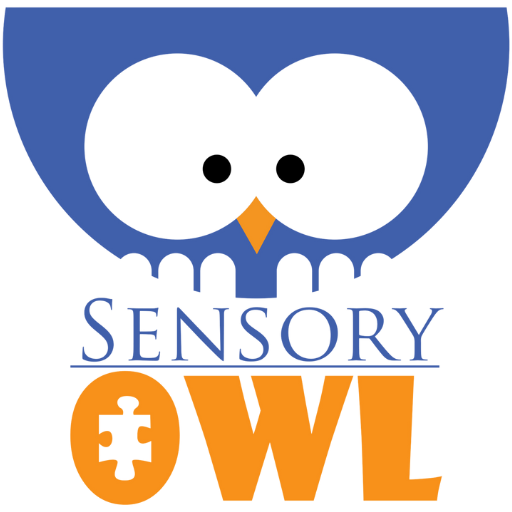
Why you need to try Deep Pressure Therapy now
Share
written by Rayan Stanislaus

Mental health has been hit hard during this pandemic.
What is interesting is how this has triggered a wave of strange coping mechanisms. I remember reading an article about how hot-tubs have become a hot-seller due to a phenomenon called ‘stress-shopping.’
No, it wasn’t just toilet paper, so many people were buying hot-tubs that suppliers could not keep up! Everyone is now looking for that ‘happiness in a can’ that they can release whenever they feel overwhelmed.
I’m guilty of some weird coping mechanisms and I am sure you are too.That teeth-grinding thing that I do? It’s stress!
Your need to organise every spice bottle in your cupboard?
Also stress.

When I think about stress-relief, one non-weird thing that comes to mind is a relaxing Thai massage...something that I’ll have to wait a few months for.
Why are massages so relaxing, anyway?
It’s the same reason why some babies love being wrapped up tightly in their cuddly blankets.
That ‘feel good’ sensation is called Deep Pressure Stimulation (DPS) or Deep Touch Pressure (DTP); terms that I came across often when I started learning about Autism and ADHD.
What exactly is deep pressure therapy?
Simply put, deep pressure therapy involves applying pressure equally across the body. You can think of it as being bear-hugged from head to toe.
Deep pressure therapy triggers a calming response similar to one that you may feel when you are hugged tightly by a loved one. There is definitely science at play when it comes to ‘feeling good.’
In this blog, I’ll explain the benefits of deep pressure therapy and explain why products such as weighted blankets are ‘must-haves’ in your home self-care basket.
How exactly Does Deep Pressure therapy work?
Firstly, we need to understand the biology of how our body reacts to our environment.
The Autonomic Nervous System (ANS) is a component of the body’s central nervous system which controls other systems such as the circulatory system, endocrine system, digestive system, excretory system and reproductive system.
The ANS works by responding to stimuli without a person’s conscious effort. In layman’s terms, this system does all the work without your permission. This is all great stuff! imagine placing a reminder on your schedule to digest your broccoli...
The ANS consist of two systems that work together; the Sympathetic system and the Parasympathetic system.
The Sympathetic system
This system is responsible for your ‘fight or flight’ response.
When your brain senses danger, the sympathetic system responds by causing your body to react and get away from that danger. This system stimulates your body to increase your heart rate, force heart contractions, widen your pupils and slow down digestion.
No time to digest that broccoli when your body is trying to save you from basically dying.
Think about a time when you swerved away to avoid a car accident or when you quickly moved your hand away from that hot pan on the stove. You did not have time to actually think about how to respond to these threats; your body reacted automatically to avoid them.
This system is obviously extremely vital to our survival..though, it comes at a price.
The sympathetic system works by releasing ‘stress hormones’, such as adrenaline, into the bloodstream, When this is done too frequently, our bodies can become very stressed and exhausted.

It can eventually put a strain on our organs, disrupt our sleep patterns and cause damage to our overall mental health.
Mental illnesses such as anxiety, depression and dementia are all linked to the over-activity of the sympathetic system.
Some diseases such as cardiovascular disease and hypertension could cause the sympathetic system to become overactive. This further leads to more medical complications when left untreated.
Luckily for us, the second component of the ANS keeps the sympathetic system in check; the Parasympathetic system.
Parasympathetic system
The parasympathetic system tells the body how to react in normal, non-threatening situations, like when the body is at rest.
This system reverses the responses that were triggered by the sympathetic system by slowing the heart rate and decreasing blood pressure. Therefore, circulation is improved throughout the body.
Processes like digestion are also improved and overall, the body starts functioning more efficiently. In other words, this system restores and conserves our body’s resources.
So, what does all of this have to do with deep pressure therapy?
So in a nutshell, we’ve learned that the sympathetic system releases stress hormones that are needed for us to get away from danger. On the other hand, the parasympathetic system releases ‘calming’ hormones to facilitate restoration to our bodies.
When Deep Pressure Therapy is applied to the body regularly, it brings balance between these two systems. DPT stimulates the parasympathetic system to release ‘happy’ hormones more steadily while the body’s need to ‘fight or flight’ decreases.
Because this therapy gives the same sensation of a hug or a massage, ‘happy hormones’ such as Oxytocin are released into the bloodstream, causing the body to de-stress and relax.

The ‘Hug-box’
Dr. Temple Grandin is regarded as the pioneer of deep pressure therapy. Her work even led to her building her own ‘hug-box’ to reduce illnesses such as anxiety. Diagnosed with autism herself, her life’s work is centred on the understanding of the illness and advocating for its awareness.
Her work has proven that the use of sensory modulation techniques such as deep pressure therapy can help individuals with an overactive sympathetic system and sensory processing disorders.
Benefits of Deep Pressure therapy
The benefits DPT are vast. Evidence shows that it aids in reducing stress and improves overall health.
Even animals can benefit from this form of therapy, remember to give your dog a big hug next time when he/she is feeling anxious!
Though, not everyone will experience every benefit, regular practice of deep pressure therapy may:
- Reduce anxiety and stress
- Facilitate a sense of calmness
- Improve sleep patterns
- Encourages a happy mood
- Aid in reducing some chronic pains
- Decreases hypersensitivity to touch
- Lowers the occurrences of seizures
- Improves overall communicativeness
- Enhances focus
How do you practice Deep Pressure therapy?
You can practice DPT using simple deep massages, wrapping yourself in a blanket and even by being tightly hugged.
If you’re more of an ‘on-the-go’ person who requires your relaxation to be more ‘portable,’ there are products such as weighted blankets, weighted vests, weighted lap pillows, weighted collars and even weighted toys available.

‘Portable Happiness?’
Weighted blankets are very popular and work by applying pressure to the whole body (remember when I mentioned being bear-hugged?)
On the other hand, if you’re looking for pressure to be applied to specific parts of your body then weighted vests, or weighted wrist and ankle weights may be best for you.
Before you go browsing online for weighted products however, you should understand the risks of using them incorrectly.
Weighted blankets are not recommended for children under the age of three and under 50 pounds, as it increases the risk of suffocation.
Also, weighted products can be ineffective if they are too light and harmful if they are too heavy for the person who is using them.
When buying weighted blankets, your best bet is to purchase products that are ‘made-to-measure.’ This allows you to:
- Use your specific body ratio to design the optimum weight and length for effectiveness
- Choose your favourite fabric and textures
- Customize your blanket by picking your favourite colours and design
Your new best friend
No wonder why so many young children refer to their blankets as their best friend. A weighted blanket can become your best friend, too.
From understanding how applying pressure to the body can make you feel good, it makes sense why so many people are now adding weighted products to their self-care plan.
Deep pressure therapy can be extremely beneficial to people with sensory processing disorders such as ADHD and Autism but also to people who are experiencing stress, anxiety, insomnia and chronic pains.
A Thai massage is definitely something that I am looking forward to, though having the option of feeling that sensation while snuggling up to a fire place sounds like an awesome deal.
It may very well come close to your ‘happiness in a can’.
